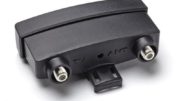It’s a term you see with antennas all the time, and it’s usually accompanied by a flower-shaped graph like the one you see above. There’s a lot of science in that little chart, and to be very honest an antenna enthusiast doesn’t need to know all of it.
Front-to-back ratio, if you read the words, is pretty obvious. It describes how much signal an antenna picks up from the front as opposed to the rear. It’s measured in dB, as most antenna stuff is. The better question is of course, why you should care.
So here’s why you should care.
Obviously in most cases when you have an antenna, you want it to pick up the stuff it’s pointed at, and you don’t care about the stuff it’s not pointed at. But, an antenna is just a chunk of metal. There’s a finite amount of signal it’s going to pick up. So, antenna manufacturers build their antennas with “tricks.” One of the most common is a reflector. The antenna’s reflector sacrifices some of the antenna’s ability to pick up signals from behind by capturing signals from the front and sending them to the back side of the antenna. A front-to-back ratio measurement tells you how much extra you’re getting due to tricks like that.
The key to all of it is that chart. Imagine if you were looking down from above the antenna, and the antenna were pointed so it faced the very top of the chart. The bigger that “bubble” is at the top, the more signal it picks up compared to the back. It’s not uncommon for an antenna to pick up 10dB more from the front than the back. In fact, it’s kind of on purpose. The chart is usually set up to show you the gain from different directions, and you need to compare the top to the bottom to get the front-to-back ratio.
Choosing the right antenna
Front-to-back ratio is one of the tools you should use to decide which antenna you should get. An antenna with a high front-to-back ratio is going to get you great reception from the front, but what if you’re trying to pick up signal from the side or from behind? Then you would probably want an antenna with a much smaller front-to-back ratio, because it would probably pick up well from more directions. An antenna that was truly “omnidirectional” would have a plot that was totally circular, because it would be good in all directions. Most omnidirectional antennas are not quite that good but they’re close enough that people don’t worry too much about their front-to-back ratios, for for that matter where the front is since these antennas are usually round.
Remember that front-to-back ratio isn’t a measure of overall gain. An antenna could have excellent gain but poor front-to-back ratio. Traditional yagi and log-periodic antennas will often have great gain but poor front-to-back ratio because they perform almost as well from the back as they do from the front. On the other hand a modern yagi like our Televes antennas performs much better from the front than it does from the back. That doesn’t make it better for that reason; you have to choose the antenna that fits your situation best.
Still confused?
Picking the right antenna can be hard. Why not get some help? You can get a recommendation from a real antenna expert. Even better, it’s free with no obligation. Call Solid Signal at 888-233-7563. We’re here during East Coast business hours. When you call, you’ll get a real, trained antenna technician on the line. They’ll help you with what you need. If it’s after hours, just fill out the form below. We’ll get back to you, usually within one business day.
Or, if you know what you need, it’s even easier! Shop at Solid Signal. You’ll find all the best antennas at the best prices!





